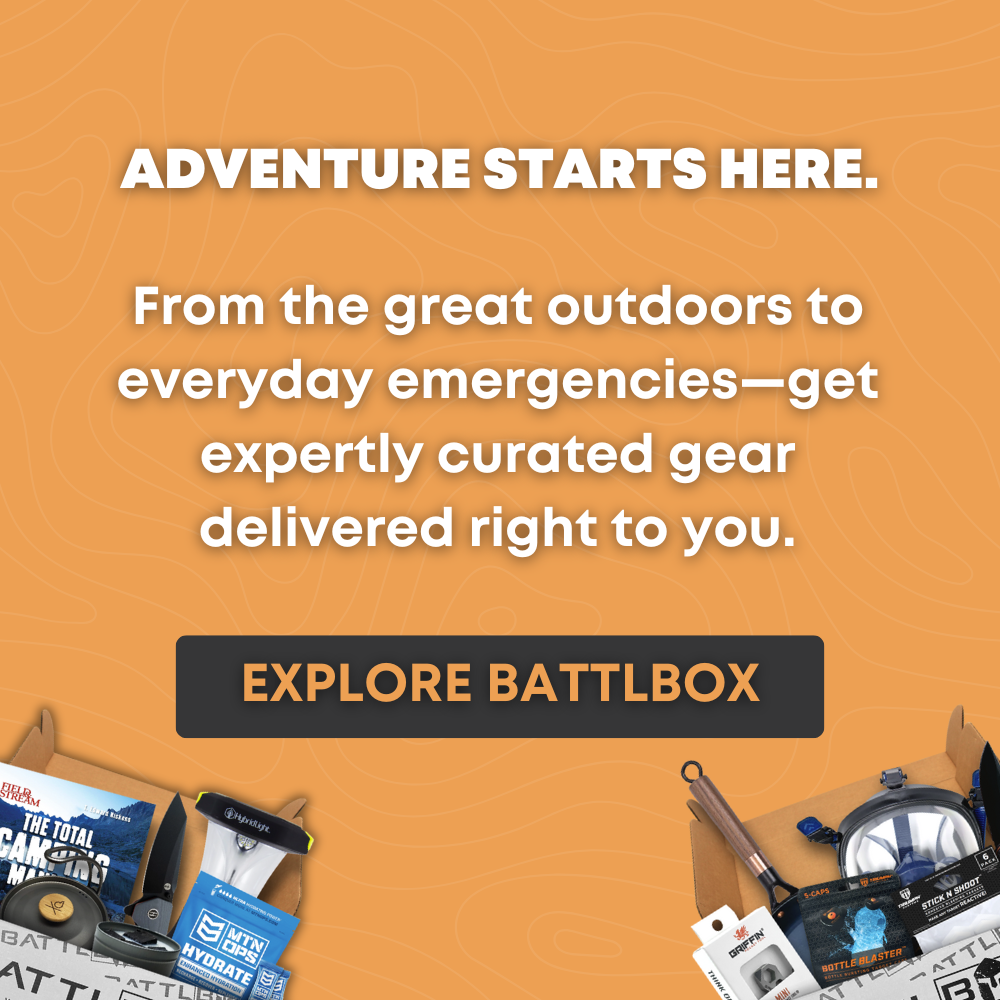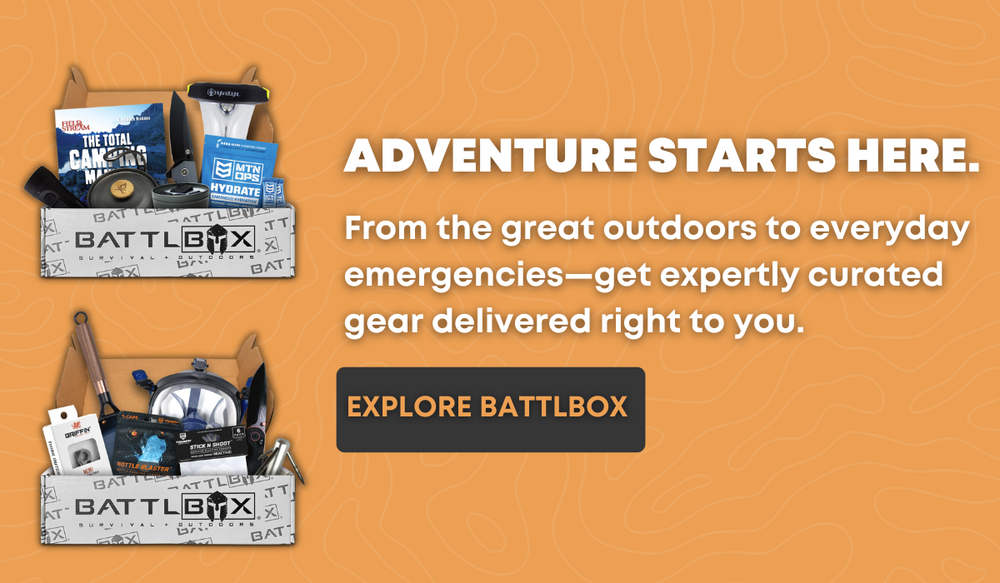Battlbox
How to Stock Up on Food for a Year: A Comprehensive Guide
Table of Contents
- Introduction
- Why Stock Up on Food?
- Creating a Tailored Food Storage Plan
- Determining What Foods to Store
- Methods for Preserving and Storing Food
- Practical Tips for Maintaining Your Stockpile
- How Battlbox Can Support Your Emergency Preparedness Journey
- Conclusion
- FAQ
Introduction
Imagine waking up one morning to find that your local grocery store shelves are bare. What if a natural disaster strikes, or a sudden economic downturn leaves you scrambling for essentials? The reality is that unforeseen circumstances can disrupt our access to food at any time. It's a scenario that many have faced in recent years, leading to a growing interest in food storage and emergency preparedness. In this guide, we will explore the crucial topic of how to stock up on food for a year, ensuring you and your loved ones are well-prepared for any situation.
The purpose of this blog post is to equip you with the knowledge and strategies necessary to effectively stockpile food without breaking the bank. By the end of this article, you will not only understand the importance of having a year’s worth of food on hand, but you will also have practical steps to create your own customized food storage plan.
This guide will cover the following key areas:
- Why you should stock up on food
- Creating a tailored food storage plan
- Determining what foods to store
- Methods for preserving and storing food
- Practical tips for maintaining your stockpile
- How Battlbox can support your emergency preparedness journey
Let’s dive into the world of food storage and preparedness, and discover how to confidently stock up on food for a year.
Why Stock Up on Food?
There are numerous reasons why individuals and families choose to stock up on food. Understanding these motivations can help solidify your commitment to building a robust food supply.
1. Emergency Preparedness
Natural disasters, pandemics, and supply chain disruptions can leave communities without access to fresh food for extended periods. By having a well-stocked pantry, you can ensure that you and your family have the necessary nutrition during emergencies.
2. Economic Stability
Inflation and economic downturns can quickly impact food prices and availability. By purchasing food in bulk when prices are lower, you can save money in the long run and protect yourself against rising costs.
3. Self-Sufficiency
Having a stockpile of food promotes self-sufficiency, allowing you to rely less on grocery stores and fast food. This independence can be empowering and comforting, especially during uncertain times.
4. Healthier Eating
Stocking up on nutritious foods allows you to control your diet and ensure you have wholesome options on hand. This can also reduce the temptation to turn to unhealthy convenience foods in times of stress.
5. Reducing Food Waste
A well-planned food stockpile encourages you to use items before they expire, reducing waste and ensuring that your food supply is efficient and sustainable.
Creating a Tailored Food Storage Plan
Before diving into purchasing food, it's essential to create a customized plan that suits your family's needs, preferences, and available storage space.
1. Assess Your Family's Needs
Start by evaluating your family's dietary preferences and restrictions. What foods do you commonly eat? Take note of your favorite meals and snacks, as well as any allergies or dietary restrictions that should be considered.
2. Set Realistic Goals
Establish short-term and long-term goals for your food storage plan. Short-term goals could include stocking up on a particular item, while long-term goals may focus on building a comprehensive year’s worth of food.
3. Evaluate Your Storage Space
Identify where you will store your food. Whether it's a dedicated pantry, basement, or a combination of areas, ensure that your storage space is cool, dry, and organized. This will help maintain the quality of your food items.
4. Create an Inventory
As you begin to stock up, maintain an inventory of your food items. This will help you track what you have, what you need, and when items are nearing their expiration dates.
5. Determine Your Budget
Decide how much you can allocate to your food storage plan. You may want to start small, adding a little to your grocery budget each month to build your stockpile over time.
Determining What Foods to Store
When it comes to choosing what foods to stock up on, focus on versatile items that have a long shelf life and are staples in your household.
1. Non-Perishable Staples
These items can last for months or even years, making them ideal for long-term storage:
- Rice
- Pasta
- Dried beans and lentils
- Quinoa
- Flour and sugar
- Canned goods (vegetables, fruits, meats, soups)
- Cooking oils (olive oil, vegetable oil)
- Honey and maple syrup
2. Freeze-Dried and Dehydrated Foods
These foods are lightweight and have an extended shelf life, making them an excellent addition to your stockpile:
- Freeze-dried fruits and vegetables
- Dehydrated meals
- Instant oatmeal
3. Frozen Foods
If you have the freezer space, consider stocking up on frozen items:
- Frozen vegetables (peas, corn, green beans)
- Frozen fruits (berries, bananas)
- Frozen meats (chicken, beef, pork)
4. Homegrown Produce
If you have space and the ability, consider growing your own fruits and vegetables. This not only provides fresh produce but can also be preserved for long-term use through canning or freezing.
5. Essential Condiments and Spices
Don’t forget to include your favorite herbs, spices, and condiments to enhance your meals:
- Salt and pepper
- Dried herbs (oregano, basil, thyme)
- Sauces (soy sauce, hot sauce, ketchup)
Methods for Preserving and Storing Food
There are various methods to preserve and store food effectively, ensuring it remains safe and nutritious for years.
1. Canning
Canning is a popular method for preserving fruits, vegetables, and even meats. The process involves sealing food in jars and heating them to kill bacteria and enzymes. Consider investing in a canning kit to get started.
2. Freezing
Freezing is an effective way to store foods like meat, fruits, and vegetables. Blanch vegetables before freezing to preserve their color and nutrients. Remember to use airtight containers or freezer bags to prevent freezer burn.
3. Dehydrating
Dehydrating removes moisture from food, inhibiting the growth of bacteria. You can dehydrate fruits, vegetables, and even meats. Dehydrated foods can be stored in vacuum-sealed bags or jars.
4. Root Cellaring
If you have a cool, dark place, you can store root vegetables like potatoes, carrots, and onions for several months. A root cellar helps maintain consistent temperatures and humidity.
5. Vacuum Sealing
Vacuum sealing extends the shelf life of foods by removing air from the packaging, preventing spoilage. It’s an excellent option for meats, cheeses, and dry goods.
Practical Tips for Maintaining Your Stockpile
Once you've built your food storage, it's essential to maintain it effectively to ensure freshness and usability.
1. Rotate Your Stock
Implement a “first in, first out” system to ensure older items are used before newer purchases. This helps prevent food waste and ensures you’re always consuming fresh food.
2. Check Expiration Dates
Regularly review your stockpile for expiration dates. Discard or use items that are nearing their expiration to maintain a fresh inventory.
3. Keep an Organized Inventory
Use a spreadsheet or physical inventory list to track what you have and what you need to replenish. This will help you make informed purchases and avoid overstocking.
4. Stay Informed
Stay updated on food preservation techniques, storage methods, and emergency preparedness tips. Battlbox offers valuable resources and products to support your preparedness journey.
5. Involve the Family
Get your family involved in the process of stocking up and organizing food. This can foster a sense of teamwork and shared responsibility for food security.
How Battlbox Can Support Your Emergency Preparedness Journey
At Battlbox, we are dedicated to helping you achieve your outdoor, survival, and preparedness goals. Our subscription service delivers hand-picked outdoor, survival, and tactical gear directly to your door each month. With a focus on emergency and disaster preparedness, our products can enhance your food storage and survival capabilities.
- Explore our Emergency/Disaster Preparedness Collection for essential gear that complements your food storage efforts.
- Consider subscribing to our Basic Subscription or Pro Plus Subscription to receive curated items that will prepare you for any situation.
Conclusion
By stockpiling food for a year, you are taking a proactive step towards ensuring your family's health, safety, and well-being. With the right planning and preparation, you can create a customized food storage system that meets your needs and provides peace of mind during uncertain times.
Remember that building a stockpile is a gradual process, and it's essential to start small, assess your family’s needs, and focus on what you will actually use. Explore various preservation methods and maintain your inventory to keep everything fresh and organized.
As you embark on your food storage journey, remember that Battlbox is here to support you. Together, we can cultivate a community of well-prepared individuals ready to face any challenges that come our way.
FAQ
1. How much food should I stock up for a year?
The amount of food needed varies based on family size and dietary preferences. A general guideline is to plan for approximately 1,800 to 2,500 calories per person per day.
2. What are the best storage conditions for food?
Store food in a cool, dry place away from direct sunlight, and maintain consistent temperatures. Use airtight containers to prevent moisture and pests.
3. How often should I check my food stock?
Regularly check your stock every few months to monitor expiration dates, rotate items, and ensure everything is organized.
4. Can I freeze canned goods?
It’s not recommended to freeze canned goods in their original containers, as they may burst. Instead, transfer them to freezer-safe containers for freezing.
5. How can Battlbox help with emergency preparedness?
Battlbox offers curated survival gear, resources, and community support to help you enhance your emergency preparedness and outdoor skills.
By understanding how to stock up on food for a year, you are taking control of your food security and ensuring your family is ready for whatever challenges may arise. Let’s gear up together for any adventure life throws our way!
Share on:








